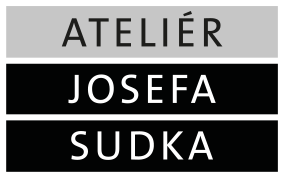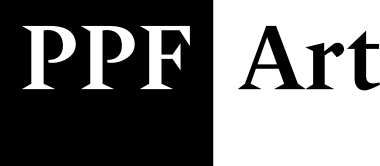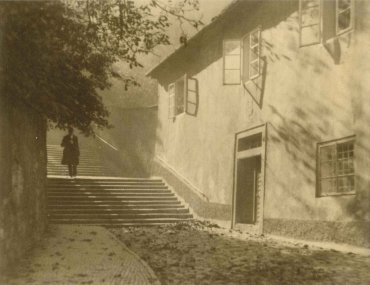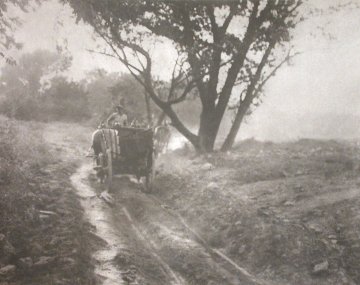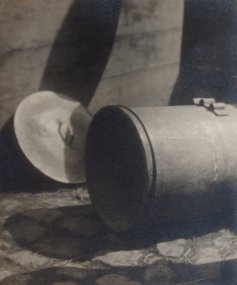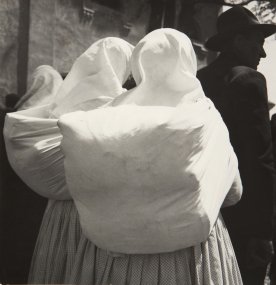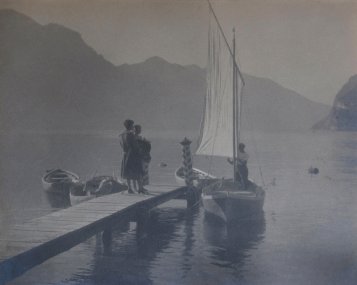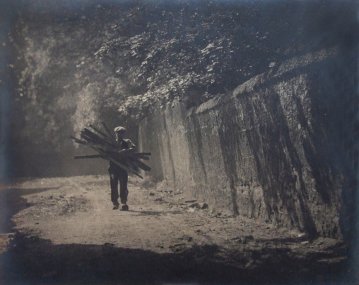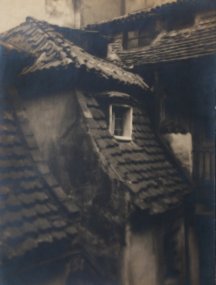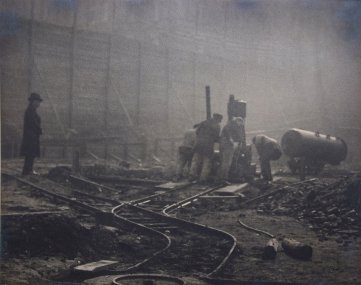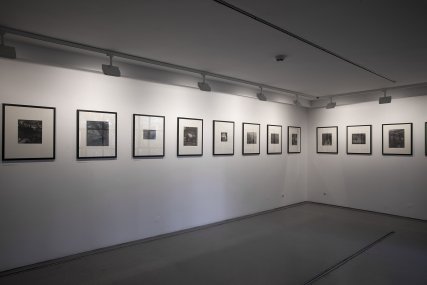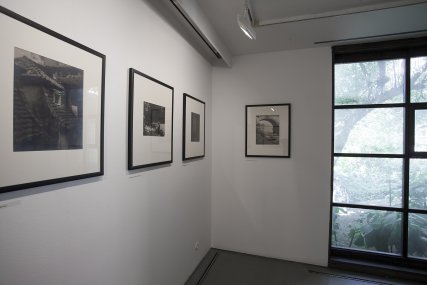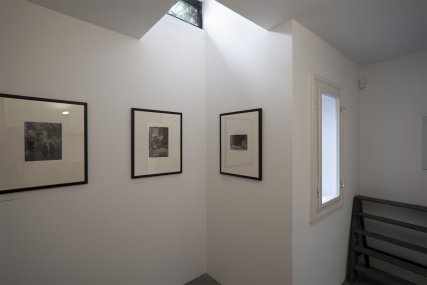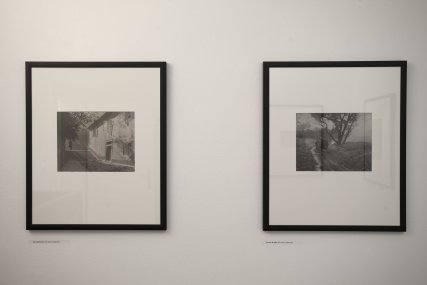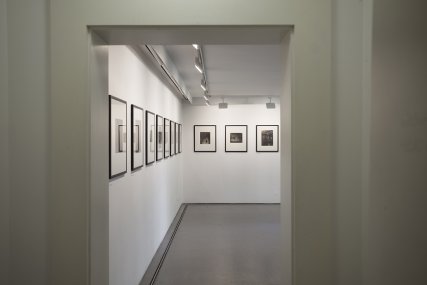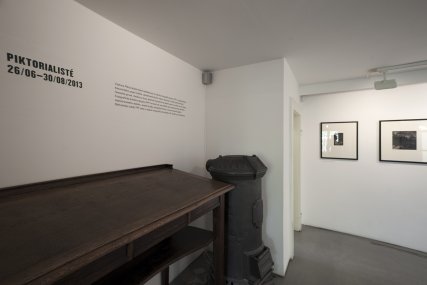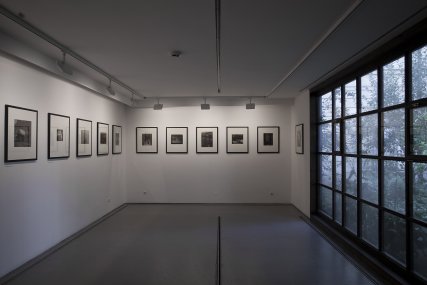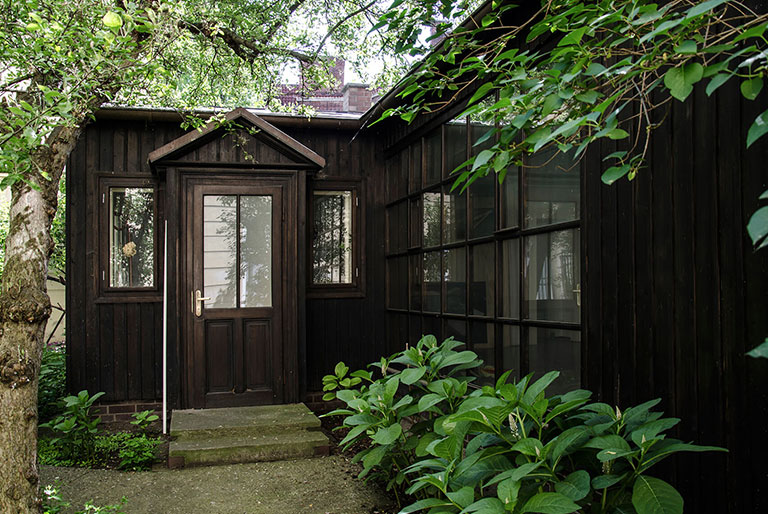Archive
The Pictorialists
25. 6. — 30. 8. 2013
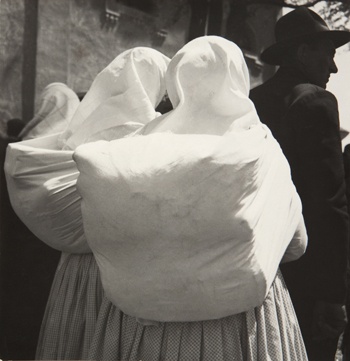
The Pictorialists exhibition provides a glimpse into the photography collection of the PPF Group.
The Pictorialists exhibition provides a glimpse into the photography collection of the PPF Group. The collection has been growing since 2000. That was when Josef Sudek’s photography studio in the Lesser Town, Prague, was reconstructed, adding a new little gallery to the public space. The selection of the works exhibited here today is meant to commemorate a historical conception of the medium, which preferred the canon of fine art to the austerity of straight craftsmanship. The exhibition comprises almost two dozen works by ten photographers, most of which were made in the 1920s.
At about the time of the First World War, the traditional genres of art, especially the landscape, the portrait, the city scene, the nude, and the genre scene, were a challenge to photographers with more painterly ambitions. One talked about ‘photographic paintings’, and the leading centres, for the Bohemian Lands too, were initially Vienna and Hamburg. The term ‘pictorialism’, which the Czechs adopted (as pictorialismus), from a Czech-born American photographer, Drahomír J. Růžička, also echoes picturesqueness. Růžička was an important influence on Czech photography clubs, particularly in the 1920s.
‘It was a strong draught by which the new trend announced itself in the years after the revolution [establishing Czechoslovakia in October 1918],’ said the photographer Jaromír Funke, assessing the modernization of pictorialism. Earlier Czech photographers used various art techniques, often the bromoil process. The American influence, the purism of simply toned enlargements, was particularly welcomed by the up-and-coming generation. They took a fancy to soft-focus lens and condemned all additional manipulation of the negative or the print as a desecration of the purely optical and chemical method. The perfect, tonally untainted positive, however, remained the prerequisite of the pictorial effect.
The arts in the first Czechoslovak Republic thrived on patriotism and were determined to make their mark internationally without delay. That led them to send lots of photographs to salons abroad. Judges and visitors alike valued not only the atmosphere of the artist’s impression but also their photogenic quality. The first viewers whom these were intended for were actually colleagues who eventually returned the exhibited works to the photographers with stamps on the back proving that they had been exhibited in foreign lands. That gave satisfaction to artists even as great as František Drtikol, Jaromír Funke, and Josef Sudek. Solo exhibitions were not usually held outside the clubs.
The clear turning point in the development of the photographic movement came in the 1930s, when mass printing offered additional motivation to that of only showing in salons. The works in our little exhibition nevertheless suggest that the legacy of the twentieth century is far richer than is usually thought. They are testimony to a metaphysical desire to get behind the obvious.
Josef Moucha
František Drtikol (Příbram, 3 March 1883 – Prague, 13 January 1961) became famous for his Art Deco nudes. Thanks to them he is now considered one of the first internationally famous Czech photographers. He received recognition at home, however, even before the First World War, when he demonstrated that this apparently naturalistic medium is capable of artistic expression. He ran courses on the oil print, gum bichromate, and carbon print. The largest part of what he left behinds consists of portraits of eminent figures of Czech literature, scholarship and science, painting and sculpture, politics, and other fields, particularly actresses, female singers and dancers. From 1913 to 1921, he operated a studio with his business partner Augustin Škarda.
Jaromír Funke (Skuteč, 1 August 1896 – Prague, 22 March 1945), in his relatively short life (he died indirectly as result of the war), managed to complete a practical and theoretical synthesis of his life’s experience with composing photographic images. He took advantage of the quasi-abstract tendencies of the 1920s: the German example of New Objectivity, the Russian lesson of Constructivist composition, and a sense for the surreal encounter, which was spreading from Paris. Simply the title of his frequently reprinted and translated article, ‘From the Photogram to Emotion’, first published in Fotografický obzor (Photographic Survey) in November 1940, says a great deal.
Jaroslav Krupka (Slatina, 27 October 1884 – Prague, 8 February 1947) was the head of the Association of Czechoslovak Amateur Photographers’ Clubs from 1928 to 1936. He preferred the bromoil process, which allowed the photographer to make distinctively personal changes when forming the picture. On principle, he sent works to international salons, but without any intention of competing. He devoted himself mainly to photographing landscapes and the atmosphere of old Prague. The exhibition of his Prague photographs at the Czech Amateur Photographers’ Club, Prague, which opened on the eve of the Second World War, earned him praise for its exemplarily patriotism.
Jan Lauschmann (Roudnice nad Labem, 1 April 1901 – Brno, 1 January 1991) was a chemist who associated with professional and amateur photographers. As a scientist, he worked with the technology of photographic materials, but he was also a teacher. The focus of his work was the landscape and spectacular details, urban and rural. He often published his works and sent them to salons. He fought for the artistic ideals of D. J. Růžička (whose niece he married). Lauschmann received recognition again later in life after a retrospective of his works at the Interkamera trade fair in 1971.
Drahomír Josef Růžička (Trhová Kamenice, 8 February 1870 – Long Island, New York, 30 September 1960), a successful doctor in the United States, was an amateur photographer since 1921. He regularly returned to his native land, Bohemia, and introduced the works of his mentors, Clarence H. White and Edward J. Steichen. He advocated the standpoints of the exclusive Photo-Secession group, which he had helped to found. He rejected the literary subject matter of Symbolism, any retouching of the negative, or manually altering the print. His photographs of city parks, quiet little corners, and genre scenes are particularly good.
Adolf Schneeberger (Choceň, 14 June 1897 – Prague, 15 December 1977) was a student at the Czech Technical University when the First World War broke out. After being discharged from military service, he continued his studies and was involved in club activity. He was elected to head the Czech Amateur Photographers’ Club in 1920, but left, in 1922, because of disputes between the young and the old generations. After a brief spell in the Prague Photography Club, he founded, together with Sudek and Funke, the Czech Photographic Society, in 1924, whose ideas were similar to those of the Avant-garde. In 1927, he and Sudek became business partners and, at least in the beginning, they owned a professional studio together.
Josef Spálený (Kolín, 26 July 1893 – ?) helped to found the Amateur Photographers’ Club of Kolín, which was established on 19 October 1919. In 1925, his colleagues threw him out because he had, despite their warnings and injunctions, continued to exhibit in a shop window in Kolín (a dispute which has been completely forgotten). Spálený worked on his family farm and, in 1922 at the latest, he introduced Jaromír Funke to Josef Sudek. In publications on photography he is mentioned as their fellow-traveller in the early period of pictorialism. He sold Sudek the 9 x 9 cm single lens reflex camera with which Sudek made, among other things, the St Vitus’ Cathedral series.
Josef Sudek (Kolín, 17 March 1896 – Prague, 15 September 1976) graduated from the State School of Graphic Art in Prague (which he attend from 1922 to 1924), under the guidance of the pictorialist Karel Novák. In the 1930s, he identified with Functionalism, exhibited with the Avant-garde, and was considered an important photographer of advertisements, arranged studio scenes, sculpture, architecture, Prague, landscapes, and, later, unarranged still lifes. Together with František Drtikol, Jaroslav Rössler, and Jaromír Funke, he is considered one of the most important photographers of the interwar years and one of the most published Czech artists of the last century. He achieved a supreme postmodern synthesis after he abandoned the modern style and returned to the beginnings of pictorialism.
Augustin Škarda (Svijany u Turnova, 15 July 1879 – Prague, 3 March 1937) was a civil engineer and a clerk of the Bohemian Committee (the executive body of the provincial legislature) in Prague. Together with František Drtikol, he helped to make an album of oil prints, From Large and Little Courtyards of Old Prague (1911). He worked from 1922 to 1936 as a copy editor on the monthly Fotografický obzor (Photographic Survey) and from 1931 to 1936 on the annual Československá fotografie (Czechoslovak Photography). Active in the amateur photographers’ movement, he educated photo hobbyists, compiled handsome maps of the Czech Amateur Photographers’ Club, and translated works on photography.
Josef Šroubek (Prague, 2 December 1891 – Prague, 29 August 1964) was a graduate of the Czech Technical University. He participated in ten European ice-hockey championships and three Olympic Games, which were also considered world championships. In addition, he played football, was a racing-car driver, and also enjoyed painting, sculpture, and photography as hobbies. In protest to the old-fashioned styles, he and Adolf Schneeberger, Jaromír Funke, Josef Sudek, and other colleagues, left the Czech Amateur Photographers’ Club in Prague, in 1922, and founded the Czech Photographic Society, in 1924, which was open to professionals.
Works on display (a selection)
Exhibition opening
Ze sbírky skupiny PPF
AtelierJosef Sudek
Újezd 30, 118 00 Prague 1, Czech Republic
Open daily except Monday 12 AM – 6 PM
Tel.: +420 251 510 760
Admission 10 CZK
/ free for students of art schools
